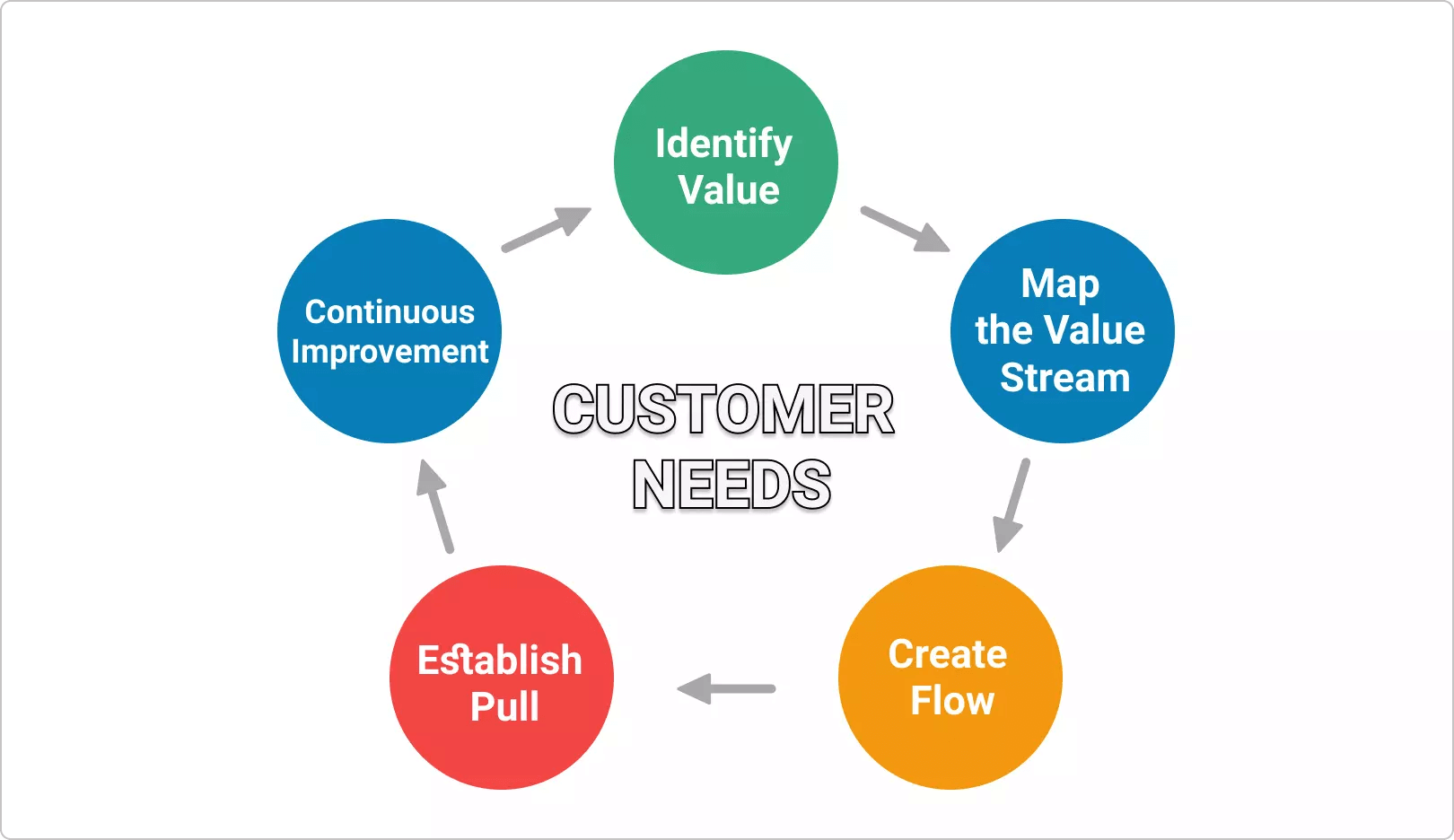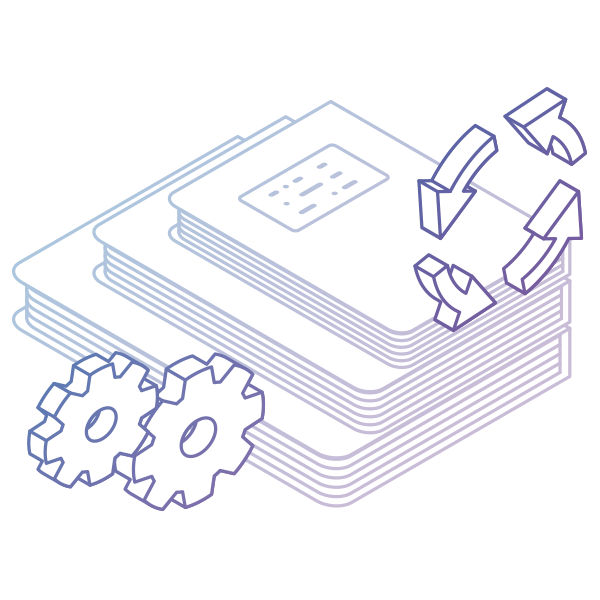Key Takeaways
-
What is built-in quality? Lean quality management focuses on embedding quality into every process step, not just inspecting it in.
-
Reactive vs proactive quality management: Built‑in quality differs from quality control by proactively preventing defects rather than reacting later.
-
How to implement built-in quality? Through continuous improvement tools and techniques like standardizing work, 5S, Jidoka, Poka‑Yoke, PDCA/A3, value stream mapping.
What Is Built-in Quality in Lean?
Built‑in quality means preventing defects before they happen - not catching them later. Instead of relying on inspections and metrics (reactive quality control), built‑in quality integrates quality into every step using Lean thinking. Inspections and KPIs still have their place, but they don't add direct customer value and can even encourage gaming the system.
Why Reactive Quality Management Isn't Enough
When we think about building quality into our products from the start, the first question is: why isn't this happening already?
The most common answer in traditional management is more inspections and more KPIs. But while these tools help catch defects, they don't prevent them. This approach is reactive - and often wasteful.
The Problem with Relying on Inspections and Metrics
Inspections and metrics don't add value for the customer. At best, they help you catch issues after they've already occurred. At worst, they lead to "gaming the system" - where teams focus more on hitting the metric than improving the work.
To be clear: KPIs and inspections are useful. They have their place in quality management. But relying on them alone won't ensure quality.
Instead, they often result in:
- More time spent finding and fixing issues late in the process
- Higher costs
- Persistent defects and rework
So, if reactive methods aren't enough.
How do we shift to a proactive approach that builds quality into every step?
How to Establish a Quality-Driven Culture
In Lean management, quality isn't something you inspect at the end. It's something you build in from the very beginning - through value-driven thinking and continuous improvement.

Quality Starts with Culture
Built-in quality doesn't happen by accident. It's the result of a company-wide shift toward Lean thinking. When teams adopt a continuous improvement mindset, quality becomes everyone's responsibility - and part of every process.
Lean principles aren't just theory; they guide real decisions and actions that shape how work gets done.
Here's how they contribute to a strong quality culture:
| Value-Centered Mindset |
Focus only on what delivers value to the customer |
Prevents unnecessary work and misaligned efforts |
| Waste-Conscious Thinking |
Eliminate steps, metrics, or activities with no value |
Streamlines work and avoids complexity |
| Small Batch Flow |
Break work into smaller, manageable units |
Makes defects easier to spot and fix |
| Flow Over Bottlenecks |
Identify and manage slow or overloaded stages |
Avoids delays and keeps quality consistent |
| Pull-Based Work |
Do work only when there's demand for it |
Reduces overproduction and unneeded effort |
| Upstream Leadership |
Empower team members to raise and solve problems |
Fixes root causes early, not after the fact |
| Ongoing Improvement |
Regularly review, reflect, and refine processes |
Keeps quality evolving with every cycle |
Think Beyond Your Task
Quality isn't just about what you do - it's about how your work fits into the bigger picture.
When teams start thinking in terms of value streams (the full journey from idea to delivery), they gain clarity on what really matters. That perspective helps prioritize the right tasks, remove unnecessary ones, and maintain consistent quality across the board.
How Do You Turn Quality Principles into Everyday Practice?
Proactive quality improvement isn't just about having good intentions - it's about putting Lean values into action at every stage of work.
This starts when everyone on the team, from individual contributors to leadership, begins thinking about their work through a Lean lens. That mindset must be reflected in the decisions, processes, and policies that shape your daily operations.
From Mindset to Action: Practical Ways to Build In Quality
Here's how Lean quality principles translate into real-world practices:
-
Don't build, accept, or ship defects: Defects should never be created knowingly or passed downstream. The goal is zero in-process waste.
-
Fix defects where they happen: Problems must be addressed at the point of origin - by the same person or team who discovers them. This prevents rework from piling up later.
-
Empower self-organizing teams: Teams should take initiative to fix issues, redistribute work, or escalate problems. In some cases, they may need to pause the process to solve a root cause. That's not a disruption - it's quality control in action.
-
Standardize work and define quality clearly: Clear policies and standard procedures help everyone understand what quality looks like and how to achieve it. These expectations should be part of the workflow, not an afterthought.
-
Encourage improvement at every level: No matter your role, raising problems and proposing solutions should be welcomed. A culture of continuous improvement thrives on input from the people closest to the work.
Real Example: A Missed Opportunity in Software Development
In software teams, it's common for simple bugs to be caught during final testing - issues that could've been easily prevented with a basic self-check by the developer. When this happens:
- Developers have to redo work.
- Testers waste time reporting avoidable issues.
- The whole team loses momentum and focus.
These delays could be avoided if everyone approached their work with a mindset of built-in quality.
Small Mistakes Add Up - So Do Small Improvements
Rework caused by oversight is a form of waste. Some waste is inevitable, but much of it can be prevented when teams are encouraged to:
- Think holistically across the value stream.
- Spot issues early.
- Act immediately instead of deferring fixes.
Inspections and tests are still useful - they reveal weaknesses and highlight areas for improvement. But it's the continuous improvement mindset that prevents those same issues from recurring.
That's what transforms quality from a checkpoint into a core operating principle.
What Are the Business Benefits of Continuous Quality Improvement?
When you let value-driven thinking and continuous improvement guide your quality management, the results speak for themselves.
Key Benefits You Can Expect:
-
Fewer defects passed downstream
Teams catch and resolve issues at the source, saving time and reducing costly rework.
-
Less time spent on inspections and rework
As quality becomes embedded, the need for repetitive checks and iterations naturally drops.
-
Greater production capacity
When fewer resources are tied up in fixing mistakes, the entire workflow runs faster and more smoothly.
-
Lower costs, higher margins
Faster delivery and higher quality lead to lower production costs - and ultimately, better profitability.
-
Less dependency on top-down control
As teams grow into a Lean mindset, they become more self-sufficient, reducing the need for constant oversight.
Continuous Improvement Is a Long-Term Game
This isn't a one-time initiative. Lean quality management is an ongoing journey. Early on, transformation leaders will need to guide and coach the team. But over time, as the culture matures, teams will take the lead - and that's when real momentum builds.
Businessmap is the most flexible software
to align work with company goals









